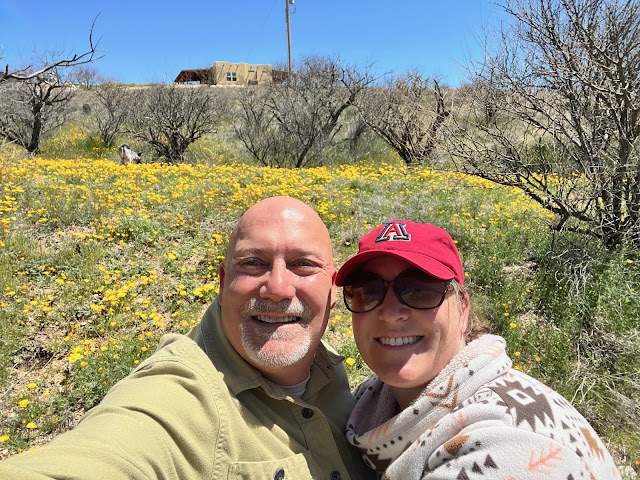My Neighbor Mesquite
In October I read Gary Paul Nabhan’s book Mesquite: An Arboreal Love Affair. I've long wanted to read it to learn more about our woody neighbors. Mesquite trees are the predominate plant species on our property. We have easily 200 trees, quite possibly more, on our 40 acres. I haven't gotten to the stage of my nature journaling journey where I'm out there cataloguing them but that's not out of the realm of possible.
In the book I learned about the beneficial relationship between mesquite and ants and the less beneficial relationship between mistletoe and mesquite. I learned that what we see above ground, which can sometimes be quite shrub-like and less tree-like, can be a quarter of what exists underground. Scientific studies have found that a mesquite's biomass underground can be 4-5 times larger than what is seen above ground. Decades ago, an elder mesquite tree in Arizona was confirmed to have a root depth of 175 feet. The mesquite's bulky underground biomass is greater than that of any known temperate forest-type tree, and it's surpassed only be ratios recorded among low-lying shrubs in the arctic tundra.
Nabhan writes that mesquite provided “more than three hundred generations of desert residents with food, shelter, fuel wood, fence posts, furniture, utensils, sealants, charcoal and topical and internal medicines.” Their bean pods were central to the diets of Indigenous peoples, and today mesquite flour is often sought out by diabetics because of its low glycemic levels. This year the pups have probably ate their weight in mesquite beans. When I clean up the yard it looks like a bunch of coyotes live here, not domesticated dogs. I hope to join the bean party next year and harvest some for human consumption.
Nabhan introduced me to a new word: sessile. It refers to an organism that is fixed in one place, immobile. Just to the east of our house is one of those immobile sentries. It's probably one of the larger trees on the property and one of my favorites. We purposely positioned the house so that the tree would not have to be bulldozed as part of excavation. Any time we were on the property with the home installers, we reiterated the importance of protecting the tree. The tree survived the many months of disruptive construction but the trunk did get buried under several feet of backfill. Tom spent months digging out the trunk and building a rock retention wall. How you might feel about a signature, courtyard tree is how I feel about this particular tree.
 |
| Our protected tree and Tom's rock wall |
This summer the tree was home to hummingbirds and flycatchers. I'd often wonder where all our hummingbirds went at night and then I found a hummingbird nest in our tree. [Update: I met a biologist yesterday (December 12) who showed me an actual hummingbird next. What I found is actually an oriole nest. Just wanted to correct myself. ] Almost too late, we discovered that a family of flycatchers was using one of our birdhouses hanging in the tree. The baby birds flew the coop just days after our discovery but I had enough time to get some photos. The babies were so big they were literally spilling out of the door.
Last year we went to a tree nursery and saw mesquite trees ranging in age and size, some selling for hundreds, even thousands, of dollars. I looked at Tom and joked, “We’re rich!” Stay tuned for Tom and Nicole's Tree Nursery ;-) Kidding aside - we are rich. Rich in the beauty of our home and this landscape. Rich in the pleasure of our very own arboreal terrain. I connect to Nabhan's word 'zerophilia', which he defines as "the contagion of love for, of, and in the desert." Amen!
Here are a few more pictures showing our mesquites through the seasons.
 |
| Late winter - still dormant |
 |
| Poppy Season - Spring on its way! |
 |
| Late Fall |
 |
| Our Fall Colors |












Comments
Post a Comment